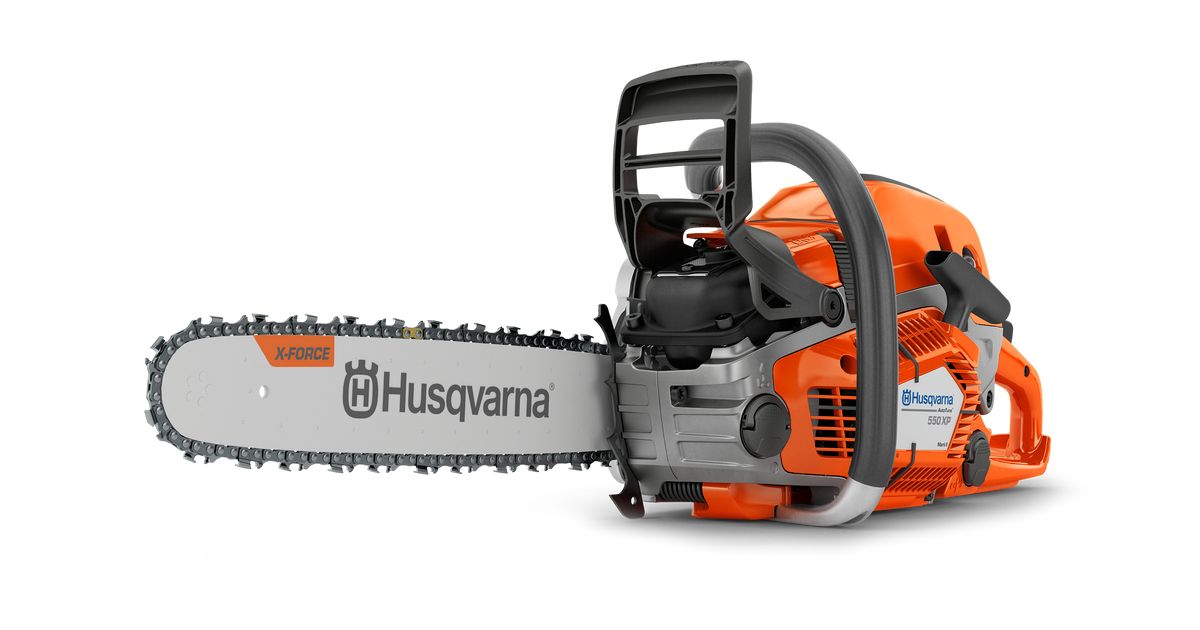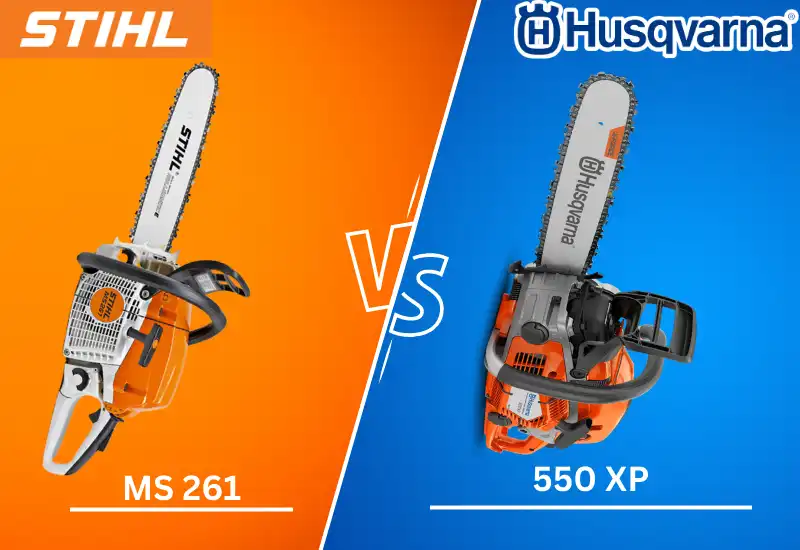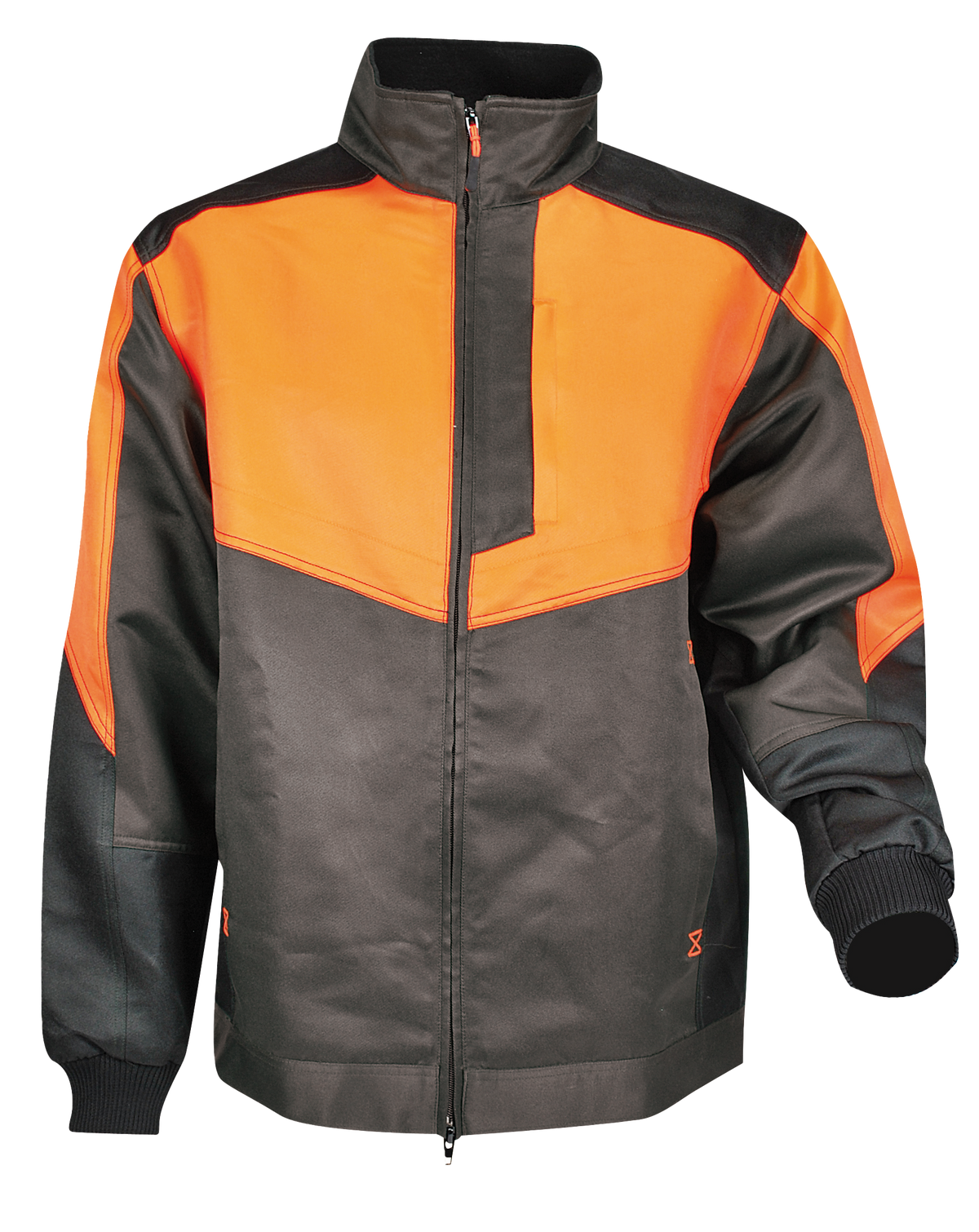Today I signed up for a woodcutter program being given in my area. You go to a workshop over a three day weekend to learn safety and how-to, and after that you can be picked to be a NF woodcutter, or leñero as they are called here, where you are assigned an acre in the NF and they mark the trees to be cut down. You cut down your trees (ponderosa pine, piñon, and juniper) and take them away for your own use or sell, and they pay you $300 and give you another acre to work on. I've been wanting to cut my own wood and have a small chainsaw (Ego 16") but have been timid about getting started. I'm a 67 year old small statured female but fairly fit and strong after having horses most of my life. I might not get picked but at least I'll learn how. Will probably have to get a different chainsaw though.
Wood cutting
- Thread starter mari
- Start date
-
Active since 1995, Hearth.com is THE place on the internet for free information and advice about wood stoves, pellet stoves and other energy saving equipment.
We strive to provide opinions, articles, discussions and history related to Hearth Products and in a more general sense, energy issues.
We promote the EFFICIENT, RESPONSIBLE, CLEAN and SAFE use of all fuels, whether renewable or fossil. -
Super Cedar firestarters 30% discount Use code Hearth2024 Click here
You are using an out of date browser. It may not display this or other websites correctly.
You should upgrade or use an alternative browser.
You should upgrade or use an alternative browser.
EbS-P
Minister of Fire
Just for the course it would be worth it. I like my ego but would want a gas powered saw if out in the woods. Here is my choice. And I’d stay with the safety chain. There are other cheaper options but I think this has some of the best power to weight offered. With and emphasis on light weight.

 www.husqvarna.com
www.husqvarna.com

550 XP® Mark II Gas Chainsaw
The second generation of Husqvarna’s 550 XP® chainsaw is ready for demanding use in your felling, limbing and bucking operations. The saw delivers maximum power
Before we had our house built in 2003 on a lot with a bunch of trees, I never had used a chainsaw. After being on this forum and getting help from members I finally started felling some trees but I always had my wife with me, you should cut with a second person.Today I signed up for a woodcutter program being given in my area. You go to a workshop over a three day weekend to learn safety and how-to, and after that you can be picked to be a NF woodcutter, or leñero as they are called here, where you are assigned an acre in the NF and they mark the trees to be cut down. You cut down your trees (ponderosa pine, piñon, and juniper) and take them away for your own use or sell, and they pay you $300 and give you another acre to work on. I've been wanting to cut my own wood and have a small chainsaw (Ego 16") but have been timid about getting started. I'm a 67 year old small statured female but fairly fit and strong after having horses most of my life. I might not get picked but at least I'll learn how. Will probably have to get a different chainsaw though.
A few members also recommended this book which I still read, To Fell A TREE by Jeff Jepson. Lots of great info in this book.
![[Hearth.com] Wood cutting [Hearth.com] Wood cutting](/talk/proxy.php?image=http%3A%2F%2Fwww.forestapps.com%2Fe-book%2FeStore%2520Images%2Fimg3.jpg&hash=afed9067f3b81c434c68af819767bb6e)
Ashful
Minister of Fire
Great thread, @mari ! Please post back with how the course went. Like others have already said, cutting with a partner is always a good idea. If that's not an option, having someone know you're out there with scheduled phone check-ins is always a good idea. Ever since my primary cutting partner passed away, I do the phone game with my wife, in particular calling her before and after each major tree drop. It's usually, "if I don't call you back in ten minutes, call me an ambulance." She will also usually text me for a check-in every two hours or thereabouts, if I'm not calling in about a specific difficult drop.
The class sounds like a great option for learning technique and safety. I've learned what I know from a combination of a friend who's a pro feller, my old cutting partner who was 34 years my senior, and lots of videos on the subject. Some of the tree pros on this forum, most notably @Nealm66 and @smokinj before him, have also dropped a lot of "pro tips" useful for those who already know the basics. But I'm sure there's even more I could learn from a dedicated class on the subject.
The class sounds like a great option for learning technique and safety. I've learned what I know from a combination of a friend who's a pro feller, my old cutting partner who was 34 years my senior, and lots of videos on the subject. Some of the tree pros on this forum, most notably @Nealm66 and @smokinj before him, have also dropped a lot of "pro tips" useful for those who already know the basics. But I'm sure there's even more I could learn from a dedicated class on the subject.
Just for the course it would be worth it. I like my ego but would want a gas powered saw if out in the woods. Here is my choice. And I’d stay with the safety chain. There are other cheaper options but I think this has some of the best power to weight offered. With and emphasis on light weight.
I think I will forward the program info to my neighbor, who is already a woodcutter (at 82 years old). Maybe he and I can be a tag team.Great thread, @mari ! Please post back with how the course went. Like others have already said, cutting with a partner is always a good idea. If that's not an option, having someone know you're out there with scheduled phone check-ins is always a good idea. Ever since my primary cutting partner passed away, I do the phone game with my wife, in particular calling her before and after each major tree drop. It's usually, "if I don't call you back in ten minutes, call me an ambulance." She will also usually text me for a check-in every two hours or thereabouts, if I'm not calling in about a specific difficult drop.
The class sounds like a great option for learning technique and safety. I've learned what I know from a combination of a friend who's a pro feller, my old cutting partner who was 34 years my senior, and lots of videos on the subject. Some of the tree pros on this forum, most notably @Nealm66 and @smokinj before him, have also dropped a lot of "pro tips" useful for those who already know the basics. But I'm sure there's even more I could learn from a dedicated class on the subject.
That looks like a fantastic choice, and almost half the weight of my Ego. Thank you!
550 XP® Mark II Gas Chainsaw
The second generation of Husqvarna’s 550 XP® chainsaw is ready for demanding use in your felling, limbing and bucking operations. The saw delivers maximum powerwww.husqvarna.com
Just remember, when you think you know it all and how it's gonna go, think again. Many pro's who cut daily, and have been cutting for years, end up injured because you just cant 100% predict what's going to happen all the time. Yes, experience helps a lot but sometimes stuff just happens. I've felled a lot of trees in my days but i never assume one is going to go exactly as i'd like or expect. Mother nature has the upper hand.
Thank you, I will get this book.Before we had our house built in 2003 on a lot with a bunch of trees, I never had used a chainsaw. After being on this forum and getting help from members I finally started felling some trees but I always had my wife with me, you should cut with a second person.
A few members also recommended this book which I still read, To Fell A TREE by Jeff Jepson. Lots of great info in this book.
![[Hearth.com] Wood cutting [Hearth.com] Wood cutting](/talk/proxy.php?image=http%3A%2F%2Fwww.forestapps.com%2Fe-book%2FeStore%2520Images%2Fimg3.jpg&hash=afed9067f3b81c434c68af819767bb6e)
The trees will be mainly shorties, except for the ponderosa. But good all around advice.Just remember, when you think you know it all and how it's gonna go, think again. Many pro's who cut daily, and have been cutting for years, end up injured because you just cant 100% predict what's going to happen all the time. Yes, experience helps a lot but sometimes stuff just happens. I've felled a lot of trees in my days but i never assume one is going to go exactly as i'd like or expect. Mother nature has the upper hand.
ericm979
Feeling the Heat
I'll second the book recommendation. It's well written and illustrated. Also that you'll probably want a gas saw, and to learn how to sharpen chains. It's not hard, especially if you can sharpen knives. I'd also recomend full safety gear if you don't already have it: cut resistant chaps or pants, steel toe boots, helmet with eye and hearing protection. Husqvarna makes a good inexpensive one.
The people who use saws in your area probably mostly use a certain brand, usually either Husqvarna or Stihl. Often it's due to the quality of the local shops. I'd check around before picking one. In my area the tree services and power line clearance folks all use Stihls. There's an excellent shop not far away.
The people who use saws in your area probably mostly use a certain brand, usually either Husqvarna or Stihl. Often it's due to the quality of the local shops. I'd check around before picking one. In my area the tree services and power line clearance folks all use Stihls. There's an excellent shop not far away.
I have all the safety gear except the steel toes. There are Husqvarna and Stihl dealers around and are well thought of in the area but the two Stihl ones are closest, one to the north, one to the south. Good point.I'll second the book recommendation. It's well written and illustrated. Also that you'll probably want a gas saw, and to learn how to sharpen chains. It's not hard, especially if you can sharpen knives. I'd also recomend full safety gear if you don't already have it: cut resistant chaps or pants, steel toe boots, helmet with eye and hearing protection. Husqvarna makes a good inexpensive one.
The people who use saws in your area probably mostly use a certain brand, usually either Husqvarna or Stihl. Often it's due to the quality of the local shops. I'd check around before picking one. In my area the tree services and power line clearance folks all use Stihls. There's an excellent shop not far away.
Ashful
Minister of Fire
The MS 261 variants are the Stihl's which compete with the aforementioned Husq. 550 XP. Good saws, same weight and horsepower, but the Stihl is 8% lighter. You can't go wrong with either one, carrying a 16" bar in hardwood, or maybe up to 18" in softwood.I have all the safety gear except the steel toes. There are Husqvarna and Stihl dealers around and are well thought of in the area but the two Stihl ones are closest, one to the north, one to the south. Good point.
I would still take the Ego with me, to keep as a spare, in case the gasser misbehaves or you get it pinched and need to cut it free. I usually take two or three saws with me when out cutting away from home.
Steel toe boots are a good idea, you'll see plenty of foot carnage photos online, it's a common chainsaw injury. I don't buy chainsaw-specific boots, just regular loggers from Georgia Boot or similar.
I found a side-by-side comparison of the two and was really liking the Husqvarna, especially where it said it would feel more comfortable for smaller hands. But then in the body of the comments Jose switches them as says the Stihl is better for small hands. Hard to know which is correct, I guess I'll have to look at both in person.

 www.freshhandyman.com
www.freshhandyman.com
I will get the steel toe boots soon as well when I go to town next.

STIHL MS 261 Vs Husqvarna 550 XP (In-depth Comparison)
The Stihl 261 and Husqvarna 550 are among the best 50cc chainsaws on the market. As they share nearly the same horsepower and displacement, choosing between them is difficult.
I will get the steel toe boots soon as well when I go to town next.
ericm979
Feeling the Heat
I like logger boots with the undercut heels. It's easier to walk down steep hills with them, and we have pretty much nothing but steep hills here. I have a pair of Redwings that are over 20 years old and still in good shape.
There are cut-resistant chainsaw boots made by companies like Haix which protect more than the toes that the steel toe boots protect. They're usually pretty expensive though and harder to find.
There are cut-resistant chainsaw boots made by companies like Haix which protect more than the toes that the steel toe boots protect. They're usually pretty expensive though and harder to find.
I've been looking online and there isn't much for women available, not at the store I thought I could go to either. I'll probably have to just take what I can find.
ericm979
Feeling the Heat
I know there are women who work in forestry or wildland fire and wear the boots. A quick search found (broken link removed to https://www.safetygirl.com/womens-logger-boots.html). Safetygirl looks like a cool site, I just told my wife about it.
EbS-P
Minister of Fire
I found these and ordered. They'll be shipped to the store so I can try on and if they don't fit I get a refund. Also get a $25 coupon for in-store use.I know there are women who work in forestry or wildland fire and wear the boots. A quick search found (broken link removed to https://www.safetygirl.com/womens-logger-boots.html). Safetygirl looks like a cool site, I just told my wife about it.
Carolina Women's Elm Logger Work Boots - Steel Toe | Boot Barn
Upgrade your workday with the Carolina Women's Elm Logger Work Boots - Steel Toe. Crafted for reliability and tested for toughness, these boots are your
Cool!I have watched quite a few of her videos.
I cut in logger boots with a two inch rubber heel for a certain amount of time, that extra lift in the back put more pressure on my knees which was really bothering me so I stopped wearing them. Even the one inch heel started bothering me so I'm in a regular style boot I usually wear daily. I'm not much younger than you but if you do go with them, make sure you listen to your knees if they start barking at ya.I found these and ordered. They'll be shipped to the store so I can try on and if they don't fit I get a refund. Also get a $25 coupon for in-store use.
Carolina Women's Elm Logger Work Boots - Steel Toe | Boot Barn
Upgrade your workday with the Carolina Women's Elm Logger Work Boots - Steel Toe. Crafted for reliability and tested for toughness, these boots are yourwww.bootbarn.com
Both are good saws. The debate over Husky vs Stihl is a brand thing. Both will do the job well, Stihl is easier get the chain off, Husky start better.I found a side-by-side comparison of the two and was really liking the Husqvarna, especially where it said it would feel more comfortable for smaller hands. But then in the body of the comments Jose switches them as says the Stihl is better for small hands. Hard to know which is correct, I guess I'll have to look at both in person.

STIHL MS 261 Vs Husqvarna 550 XP (In-depth Comparison)
The Stihl 261 and Husqvarna 550 are among the best 50cc chainsaws on the market. As they share nearly the same horsepower and displacement, choosing between them is difficult.www.freshhandyman.com
I will get the steel toe boots soon as well when I go to town next.
Anyone have gaiters? Could wear your favorite boot.
Ordered a chainsaw jacket as an alternate to a shirt I have.

 www.bartlettman.com
www.bartlettman.com
Searched Solidur, and saw they have gaiters. 2/3 of the way down.
Ordered a chainsaw jacket as an alternate to a shirt I have.

SOLIDUR AUTHENTIC PROTECTIVE CHAINSAW JACKET
Solidur Jacket with chainsaw cut protection to EN381-11 Class 1Hydrophobic polyester outer material
Searched Solidur, and saw they have gaiters. 2/3 of the way down.
Solidur chainsaw safety trousers and jackets PPE Safety Boots Helmets Gloves Waterproofs and Workwear
Solidur chainsaw trousers, pants, PPE,safety boots
www.solidur.co.uk
My sister is in Socorro. A lot of times they buy firewood, but have also cut some themselves. Pecan at an orchard within the last couple years, as I recall. She's also mentioned Pinon, Juniper and Mesquite.The trees will be mainly shorties, except for the ponderosa. But good all around advice.
Here, I'd pass several Stihl dealers before I get to the closest Husky dealer. My shop is 2.5 miles from the house. 👍Husqvarna and Stihl dealers around and are well thought of in the area but the two Stihl ones are closest
I've got a 20" bar on my 261, and it'll still pull that length pretty well. Bar length is more useful to me than having the saw cut faster when I've got the entire bar in wood--I'm not trying to set any speed records.The MS 261 variants are the Stihl's which compete with the aforementioned Husq. 550 XP. Good saws, same weight and horsepower, but the Stihl is 8% lighter. You can't go wrong with either one, carrying a 16" bar in hardwood, or maybe up to 18" in softwood.
I would still take the Ego with me, to keep as a spare, in case the gasser misbehaves or you get it pinched and need to cut it free. I usually take two or three saws with me when out cutting away from home.
Give serious consideration to how big (heavy) a saw you want to get. Most of the time I'll grab my lighter saw off the quad, an MS 170, rather than the 261, even if the bar isn't quite long enough and I have to pivot the smaller bar down from horizontal to vertical on the far side of the log, to reduce the down-cut span to what the 16" bar will handle. I go with the lighter, easier to maneuver saw whenever possible..
Yep, sometimes you need a second saw with you, in case the bar of the first one gets pinched. Most times though, you can avoid that by having a plastic wedge in your back pocket and jamming it into the top of the kerf, once you've cut down far enough. I usually keep cutting down, stop when I see the kerf start to close, then jam the wedge in there.
Last edited:
armanidog
Minister of Fire
An extra bar and chain can be very helpful to have on hand.
This is a good series on felling and bucking trees.
 www.worksafebc.com
www.worksafebc.com
This is a good series on felling and bucking trees.
WorkSafeBC
True, then you don't need another saw to get your bar un-pinched.An extra bar and chain can be very helpful to have on hand.
I think a Stihl MS 180 is a bored-out 170, with a bit more power, so maybe you could run a 18" bar on it, and buy the saw with that length already on it..? I don't know if that's a viable combination, but more knowledgeable guys in the Gear forum here might..
ericm979
Feeling the Heat
I go with the lighter, easier to maneuver saw whenever possible..
Same here, which is why I ended up with a stable of saws. We have some large trees here- the largest I've cut was 4.5' diameter. I also cut a lot of brush, and using the big saw for that would wear me out quickly.
I also watch for the kerf closing. As soon as I see that I pull the saw out quick. When making a cut I first try to figure out how the weight is distributed. For example if you have a horizontal log that is suspended at the ends and are cutting in the middle, the top is in compression and the bottom is in tension. If you cut from the top down, the kerf will close and pinch the bar. If I can't cut up from the bottom, I'll make a partial cut from the top and then roll the log to finish the cut. There's less risk of dulling the chain by hitting dirt thst way. If the log is to heavy to be rolled I'll use wedges to keep it from pinching and take my chances cutting all the way down. I find a cant hook is really useful to help roll logs in my log processing area or when I'm working on a tree I can drive a UTV to, but it might be too heavy to carry into the woods.Yep, sometimes you need a second saw with you, in case the bar of the first one gets pinched. Most times though, you can avoid that by having a plastic wedge in your back pocket and jamming it into the top of the kerf, once you've cut down far enough. I usually keep cutting down, stop when I see the kerf start to close, then jam the wedge in there.
Stihl and Husky have consumer, farm and ranch, and pro saw lines. The pro saws are lighter, more powerful and have better anti vibration. They also come with compression releases which makes starting easier, especially if like me you don't have a huge amount of upper body strength. I have a small Echo that I use for cutting brush. It does not have the compression release but it's super easy starting and very light.
Similar threads
- Replies
- 24
- Views
- 4K
- Replies
- 9
- Views
- 4K
- Replies
- 3
- Views
- 2K
- Replies
- 10
- Views
- 2K

